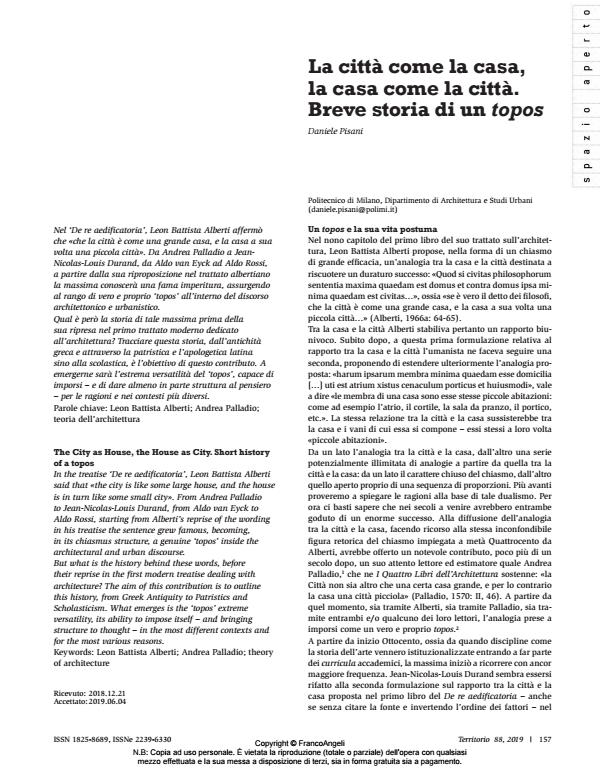The City as House, the House as City. Short history of a topos
Journal title TERRITORIO
Author/s Daniele Pisani
Publishing Year 2019 Issue 2019/88
Language Italian Pages 7 P. 157-163 File size 159 KB
DOI 10.3280/TR2019-088022
DOI is like a bar code for intellectual property: to have more infomation
click here
Below, you can see the article first page
If you want to buy this article in PDF format, you can do it, following the instructions to buy download credits

FrancoAngeli is member of Publishers International Linking Association, Inc (PILA), a not-for-profit association which run the CrossRef service enabling links to and from online scholarly content.
In the treatise ‘De re aedificatoria’, Leon Battista Alberti said that «the city is like some large house, and the house is in turn like some small city». From Andrea Palladio to Jean-Nicolas-Louis Durand, from Aldo van Eyck to Aldo Rossi, starting from Alberti’s reprise of the wording in his treatise the sentence grew famous, becoming, in its chiasmus structure, a genuine ‘topos’ inside the architectural and urban discourse. But what is the history behind these words, before their reprise in the first modern treatise dealing with architecture? The aim of this contribution is to outline this history, from Greek Antiquity to Patristics and Scholasticism. What emerges is the ‘topos’ extreme versatility, its ability to impose itself - and bringing structure to thought - in the most different contexts and for the most various reasons.
Keywords: Leon Battista Alberti; Andrea Palladio; theory of architecture
Daniele Pisani, La città come la casa, la casa come la città. Breve storia di un topos in "TERRITORIO" 88/2019, pp 157-163, DOI: 10.3280/TR2019-088022